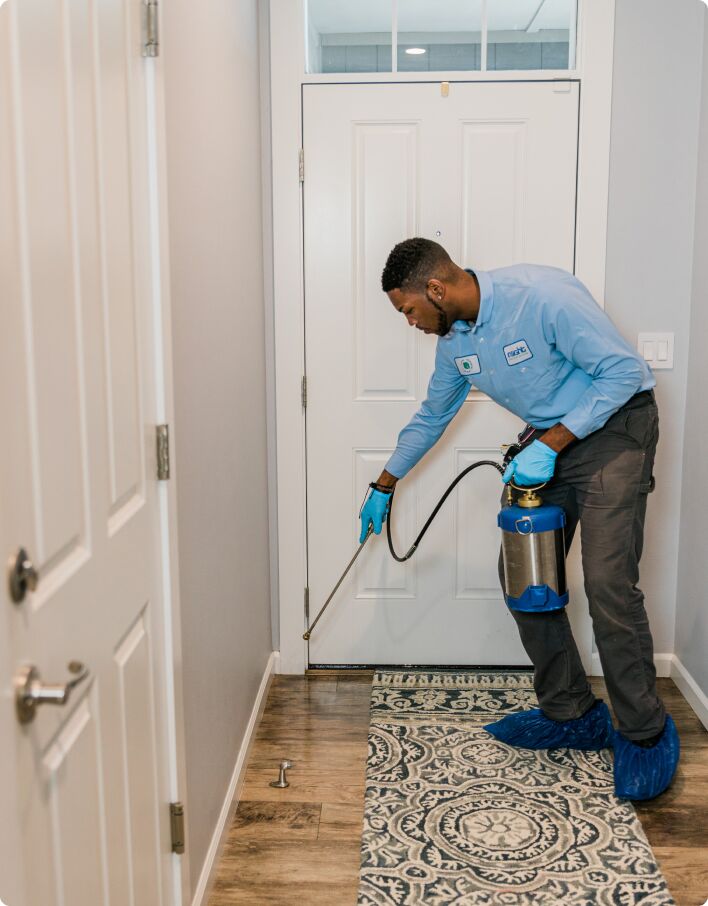Bed Pest Therapy Malfunction: Comparing Chemical Vs. Non-Chemical Solutions
In the world of pest control, especially when handling the relentless problem of bed bugs, the selection between chemical and non-chemical therapy options can be a pivotal one. Both techniques offer unique benefits and disadvantages, affecting elements such as performance, safety and security factors to consider, and overall expense. By checking out the nuanced details of each technique, a more clear understanding of which path to go after in resolving a bed bug invasion can be acquired.
Effectiveness of Chemical Treatments
Chemical therapies for bed insect invasions have actually been commonly acknowledged for their potent and rapid effectiveness in eliminating these insects. When taking into consideration the performance of chemical therapies, it is vital to recognize that they can provide a detailed and quick solution to a bed insect problem.
Moreover, chemical therapies have the advantage of offering recurring effects, suggesting that they can continue to remove bed pests also after the initial application. This residual activity is especially beneficial in combating any prospective re-infestations. Additionally, the quick activity of chemical treatments can bring relief to people dealing with severe bed pest invasions, allowing them to regain control of their space quickly.
Safety Interest In Chemical Solutions
One important aspect that needs careful factor to consider when utilizing chemical options for bed bug therapy is guaranteeing the safety of owners and the atmosphere. While chemical therapies can be effective in eliminating bed pests, they may position threats if not dealt with effectively. Among the key security worry about chemical options is the prospective damage they can trigger to human wellness. Direct exposure to particular chemicals used in bed bug therapies can bring about respiratory problems, skin inflammation, or various other negative responses, specifically in people with pre-existing problems or sensitivities. Additionally, improper application or dose of chemical pesticides can lead to toxic residues sticking around in the treated location, positioning lasting wellness threats to occupants.
Additionally, the ecological effect of chemical solutions is an additional considerable factor to consider. Some chemicals utilized in bed bug treatments might be unsafe to valuable bugs, wildlife, and communities if they leach right into the dirt or water systems. It is important to use chemical therapies carefully, following security standards, and considering less hazardous alternatives to minimize these dangers and guarantee the secure and reliable monitoring of bed insect infestations.
Benefits of Non-Chemical Techniques
Taking into consideration the potential security concerns and ecological impact related to chemical services for bed pest treatment, discovering non-chemical methods offers an appealing choice with numerous distinctive benefits. Non-chemical methods provide a much safer choice for families, particularly those with pet dogs, individuals, or kids conscious harsh chemicals. These methods remove the threats of direct exposure to hazardous materials, minimizing the possibility for damaging health and wellness results. Additionally, non-chemical therapies are eco friendly, as they do not add to air or water air pollution, making them a lasting choice for insect control.
In addition, non-chemical options can be effective in targeting bed bugs, consisting of hard-to-reach areas where chemical treatments might not permeate - A1 bed bug treatment in charlotte. Methods such as warmth treatment, vacuuming, steam cleansing, and mattress coverings offer thorough obliteration without the use of harmful chemicals.
Limitations of Non-Chemical Treatments

In addition, non-chemical therapies frequently call for several applications to attain successful removal. This can be time-consuming and might not constantly ensure total removal of all bed insects and their eggs, especially in concealed or hard-to-reach places.
Moreover, the success of non-chemical treatments heavily relies upon proper implementation and thoroughness, which can be testing for people without expert know-how. Poor application of non-chemical techniques may cause incomplete removal, resulting in persistent problems and the demand for extra treatments.
Therefore, while non-chemical therapies have their benefits, it is crucial to acknowledge these constraints and consider them when establishing one of the most effective approach for taking care of bed insect infestations.
Cost Contrast: Chemical Vs. Non-Chemical Options
Provided the limitations connected with non-chemical treatments, a necessary element to evaluate in the context of bed pest management is the price comparison in between chemical and non-chemical choices. Chemical treatments commonly include the application of pesticides by professionals, which can great post to read vary from $250 to $900 per space, relying on the seriousness of the infestation and the size of the location to be treated. On the other hand, non-chemical treatments like warmth treatment or vapor can be much more costly, with expenses varying from $1,000 to $6,000 for an entire home. While the initial cost of chemical treatments might seem reduced, numerous treatments might be required to totally get rid of the infestation, possibly enhancing the total cost. On the various other hand, non-chemical alternatives may give a much more lasting and eco-friendly service, although they can be cost-prohibitive for some people. Inevitably, when taking into consideration the cost of bed insect treatment choices, it is very important published here to weigh the in advance expenditures versus the effectiveness and long-lasting sustainability of the selected approach.
Conclusion

Taking into consideration the potential safety issues and environmental influence associated with chemical remedies for bed insect treatment, exploring non-chemical navigate here methods offers an encouraging alternative with a number of unique advantages.Offered the limitations associated with non-chemical treatments, a necessary facet to evaluate in the context of bed bug administration is the cost contrast in between chemical and non-chemical choices. In comparison, non-chemical treatments like warmth therapy or vapor can be more expensive, with expenses varying from $1,000 to $6,000 for an entire home. While the initial cost of chemical treatments may seem lower, multiple treatments might be required to fully eradicate the infestation, potentially increasing the overall cost.In conclusion, when comparing chemical and non-chemical bed insect treatment choices, it is vital to think about efficiency, security, benefits, limitations, and cost.
Comments on “Trusted A1 Exterminator Charlotte NC - Comprehensive Pest Solutions”